- Home
- Don Pendleton
California Hit
California Hit Read online
California Hit
The Executioner, Book Eleven
Don Pendleton
To San Francisco.
God keep.
The strongest man in the world is he who stands most alone.
—Henrik Ibsen
I have to stand alone. Every life I touch becomes infected with Death. I want to spread my disease only to those who deserve it. I came to this town to visit a plague upon the Mafia. Let everyone else stand clear.
—Mack Bolan, THE EXECUTIONER
UNIFORM CRIME NETWORK… Advisory Special
Subject
Mack Bolan, known as “the Executioner”… also operates under various cover names, usually of Italian or Sicilian origin. American Caucasian, age 30, height 75 inches, weight about 200. Color of hair varies. Eyes: ice blue; sometimes appear dead grey. Usually affects costume of black combat garb, commando style, but also known to wear various innocuous outfits in a subtle applications of “role camouflage.”
M.O.
Considers the entire world a jungle and regards himself as final judge of who shall survive and who shall not. By conservative estimates, has slain more than one thousand denizens of the American underworld; considers himself “at war” with all elements of the crime syndicate everywhere.
Combat veteran of Korea and Vietnam, highly skilled specialist in “destruct missions” against enemy commands; received nickname “the Executioner” in Vietnam by virtue of high proficiency this regard. Considered highly adept at penetration/intelligence techniques; military tactician and strategist of highest order; a master at both the “quiet kill” and the “massive kill” requirements of jungle guerilla warfare. All of foregoing constitute subject’s M.O. Wages all-out warfare using all facets of the combat character. Identifies, infiltrates, and destroys “the enemy”—sometimes with wiles, sometimes in full frontal assaults. Has been known to use various personal combat weapons as well as field mortars, bazookas, demolition devices, etc.
Primary personal weapon, however, appears to remain a 9mm Beretta Brigadier equipped with silencer, worked in for precision kills at close range. Latest personal side-arm, described as “a big silver hawgleg” by official witness has been identified as a .44 calibre autoloader, “the .44 AutoMag.” This latter weapon exhibits impressive accuracy at extremely long ranges and should be considered equivalent in every respect to a big-game rifle.
During latest campaign, subject was observed wearing both weapons at once.
CAUTION… subject is regarded as extremely quick with explosive-reaction combat instincts.
Special info
Subject is in continual “state of war” and is considered highly dangerous. All LEO urged exercise extreme caution—DO NOT ATTEMPT MAN-TO-MAN ARREST.
Subject appears to avoid police confrontation and is not known to have ever assaulted or fired upon LEO; however subject is considered desperately defensive and in constant jeopardy via various determined underworld elements. A rumored “open contract” in amount exceeding 100-thousand attracts attention of miscellaneous freelance gunmen in ever-increasing numbers. Subject is therefore under continual duress AND IS EXTREMELY DANGEROUS TO APPROACH. Various regional LEA have unofficially authorized “Extreme Precaution Apprehension”—shoot on sight, to kill.
Background info
Hometown friends, teachers, GI companions, etc., describe subject as mild-mannered, likeable, well adjusted—often even as “soft hearted.” Welsh-Polish extraction, eldest of three children. Mother, father, teen-aged sister victims of violent death while subject serving Vietnam combat zone. Brother Johnny, age 15, sole survivor, escaped with severe gunshot wounds. Subject granted emergency furlough from Vietnam to bury family and arrange care minor brother. “Home front war” began during this period and subject declared AWOL, subsequently military deserter. Following victory over hometown underworld elements, subject pursued successive campaigns in Los Angeles, Palm Springs, Phoenix, Miami, DC, France, England, NYC, Chicago, Las Vegas, Puerto Rico. Most recent war zone was San Francisco, where subject crushed powerful West Coast criminal conspiracy with international implications. Unofficial police sympathy noted various quarters LEA, recommend indoctrination programs emphasizing PUBLIC MENACE aspects of subject’s illegal crusade.
Rumors absolutely unfounded repeat unfounded and untrue that various federal agencies are supporting subject’s private war.
ALL LEO cautions should be considered doubly emphasized.
EOM. Brognola/Justice sends.
PROLOGUE
Mack Bolan had long entertained a bone feeling about San Francisco. His ground ear had been pulling him here ever since the nightmare in New York, the steady vibrations from that underculture of the national crime network telegraphing the insistent message that here was where the blood was at.
That certain feeling was intensified as the warwagon sped across the doubledecked engineering marvel known as the San Francisco-Oakland Bay Bridge and the fabulous skyline of that great old city came into view.
Down there was a population-density surpassed only in Manhattan, and a cosmopolitan atmosphere second to nowhere. It was more than a city; San Francisco was a way of life and a state of mind, an independence of the human spirit exuberantly expressed and often wildly exaggerated. There was the largest Chinatown outside the Orient, the most cohesive Italian community on the continent, and a general mixture of peoples and cultures more productive than any similar venture on the planet Earth.
It had started as the Spanish Presidio and Mission Dolores, in about the same year that the English colonies on the other American coast were proclaiming their independence. A scant fifteen years before the historic gold rush which put California on the continental map, the pueblo of Yerba Buena was established there, under the flag of Mexico, and in 1847 it was renamed San Francisco—a California Republic community of some eight hundred souls.
The discovery of gold at Sutter’s Mill in 1848 produced a sprawling tent settlement of fortune hunters which was formally incorporated as the city and county of San Francisco in 1850. From this unlikely collection of miners, sailors, merchants, profiteers and prostitutes arose the queen city of the American West, cultural and financial center of the Pacific Coast, the grand old city beside the Golden Gate which now serves a metropolitan area of more than three million people, annually moving five billion tons of cargo through her seaport and fifteen million travelers through her airspace.
Most of the city’s blueblooded families would prefer to forget the wild origins of the civic phenomena, once the port of entry for thousands of Chinese coolies who were imported as virtual slaves to mine the precious minerals and build the rail networks of the booming west; the bloody Barbary Coast where the iron men from wooden ships buried their months of ocean-going loneliness in a variety of pleasures. But hundreds of thousands of World War II servicemen would forever remember that same Barbary Coast with its roaring attractions of booze, broads, and brawls.
Less than a decade later, this same cultural spawning ground had become the womb of another original American creation, the Beat Generation—and the beatniks had hardly faded from view when a successive subculture, the hippies, appeared on the scene and established their unofficial headquarters in the big bawdy city at the Gate. And just across the bay, in Berkeley, the political revolution of American youth was born, to be spilled out and amplified in shock waves reaching throughout the nation.
And there was more to San Francisco. It was the city where the toughest cops in the world had been forced to barricade themselves inside their own police stations. It was the city where the most active hotbeds of Communism outside the Iron Curtains tensely coexisted with the western U.S. seat of Capitalism; the city where students wore crash helmets into classroom
s; it was the western capital of homosexuality as well as the cradle of emancipated female eroticism—and it was still a city where a cabbie’s first question was never “where to?” but always “wanta get laid, buddy?”
Yeah, Bolan knew San Francisco.
It was a city of natural beauty, sure—what was it the moviemakers called it?—the most photogenic city in the world? The fabulous hills and vertical streets and spectacular bay views were a cinematographer’s dream come true. But there were “underground” views of equal interest to another rapidly emerging variety of moviemaker—San Francisco was also the porno movie capital of the country.
A city of interesting paradoxes, yes—and not the least of them was its newest ingredient: Mack Bolan.
Educated to kill and trained to survive the savageries of jungle combat, this American GI had returned from war to bury his own beloved dead—the victims of another sort of savagery at home—and to declare a war to the death upon “the greater enemy.”
Bolan had earned fame in Southeast Asia as the Executioner. As a penetration team specialist and sniper, he had been officially credited with ninety-seven kills of enemy high-rankers, and he had been described by his commanding officer as “a self-propelled combat machine, and a formidable weapon of psychological warfare.”
But in that same war zone, the young soldier was also known as “Sergeant Mercy”—the GI who could not turn away from orphaned kids and stricken villagers who were victims of the brutalities of warfare.
The homicide detective who investigated Bolan’s initial “homefront battle” described the sergeant as “.… an enigma. I don’t know if I want to arrest the guy or pat him on the back. He’s a killer, sure—but he’s a killer with a difference.”
That “difference” was the only thing that allowed Mack Bolan to tolerate himself and his new role in the world. He did not kill for personal gain, nor out of hatred or revenge. In his own view, he was simply a soldier doing his duty. His war was with the enemies of his society, enemies who had found protection from legal justice through a high degree of organization, political “clout” and financial power. By their own manipulations they had lifted themselves beyond the restrictions of the law.
In Bolan’s understanding, they had also removed themselves from the protection of the law. Through their own actions and their own contempt for social justice, they had thrown themselves into the court of jungle law—and here were no judges, no juries—here was simply life and death, the survival of those fittest to survive, and here Mack Bolan was the Executioner. So long as he lived, those others would die. This was Bolan’s “difference.” He was in a state of war—with those who were unfit for survival.
His jungle knew no geographical boundaries. It existed only in the hearts and actions of certain men, in the territorial environs of a criminal conspiracy known variously as the Mafia, La Cosa Nostra, the organization, the syndicate—or, collectively, the mob.
And, yes, in that exciting old city beside the Golden Gate, in that paradoxical town of human extremes, there existed a jungle of considerable dimensions.
And Death moved coolly upon the scene, and sniffed the air, and bent an ear to the ground, and knew that the time was right for the California hit.
The Executioner was on the scene.
And the golden city knew immediately that she had a hot war on her hands.
1: OPENERS
It was a time for war.
And Mack Bolan was not a negative warrior. His game was blitzkrieg—thunder and lightning, death and destruction, shock and panic and crawling fear—and once again his time for war had come.
For three nights he had held his peace and his patience, carefully reconnoitering and gathering intelligence, reading faces and comparing them with the indelible etchings of his mental mugfile, classifying them by family, function, and rank—and marking them for death.
On this third night, the tall man in night combat garb had been at his post for more than three hours in the late evening chill, quietly watching and biding his time outside the would-be swank nightclub at the edge of San Francisco’s North Beach district. He was dressed all in black. From his right shoulder was suspended a “greasegun” machine pistol, riding muzzle-down at the hip. Clamped into the snap-away leather beneath his left arm was the black Beretta Brigadier—a nine millimeter autoloader with a muzzle silencer, his most trusted weapon. A number of extra clips for both weapons were carried in a web belt at his waist—also a light assortment of personal munitions, including a small fragmentation grenade and an incendiary flare. On the ground at his feet rested a flat canvas bag—a “satchel charge” of high explosives.
The place he watched occupied a chunk of high-rent ground completely isolated from the rest of the neighborhood by a couple of acres of asphalt parking area. At dead center was the joint itself, with access along a cozy little pathway winding through artificial shrubbery and plastic flowers. A man-made brook encircled the building, flowing beneath quaint footbridges and jogging around rustic benches emplaced in synthetic arbors.
The China Gardens, they called it, but most of it was bastard-American-Oriental with two wings of weathered stucco, painted-on dragons, and false eaves for the flat roofs. One of those wings housed a dining room, which featured a Chinese menu native only to America. The other provided a ballroom-lounge with pretty Chinese hostesses and cocktail waitresses—the only genuine Oriental touch to the entire place.
At front and center was a two-story structure that was supposed to look like a pagoda; apparently nobody had ever told the owners that a pagoda is a sacred place—a temple, not a saloon. No one seemed to mind but Bolan. Business had been good and the trade lively throughout its surveillance.
But Bolan had seen the joint in the daytime, and it had looked as seamy as most of these places are in honest sunlight. At night it was swankly glamorous and sure to catch the eye of the unwary tourists who couldn’t spot a clip-joint until confronted with the bill.
The China Gardens was more than a clip-joint, though. It was a bag-drop and a crossroads of many diverging trails in San Francisco’s underworld, a favored meeting place and watering hole of the area’s most secretive citizens. During the three long nights of patient stakeout, Bolan had identified several California mob captains—including a Peninsula gambling czar and the narcotics boss of Berkeley. He had also recognized a miscellany of muscle men and runners, plus a couple of black bagmen who were probably from the city’s Fillmore District, the black neighborhood.
So, yeah, it seemed the perfect place to start a war.
The timing was about right. They’d closed the door an hour ago. All of the legitimate customers and employees were long gone—and everyone left in the joint now would be a valid target. There were plenty of those left.
Johnny Liano was in there. He’d made it big in Berkeley when the kids began turning on with drugs instead of politics. Pete Trazini was also present, the shylocker and numbers king of depressed Richmond who’d lately been boasting that he was getting bigger than Bank of America.
About a dozen lesser Mafiosi were inside, too, some of them with Liano and Trazini—hardmen; personal bodyguards who probably followed their bosses even to the bathroom.
The parking lot was deserted except for a cluster of vehicles parked near the rear entrance. The neon marquee out front was extinguished and both wings of the building were darkened; only the pagoda was showing lights, and these were all on the upper level.
Wisps of fog drifted sullenly past the lone lamp which now tried to illuminate the parking area, a dull yellow blob of light which would have been worthless even without the dense atmosphere. This part of the city was eerily quiet and almost muffled in the characteristic black-gray wetness of early-morning San Francisco, the fog and the silence blending into an entirely new dimension of time and space. The world seemed to be wrapped tightly around this tiny oasis of sight and sound, the lighted coffee house in the next block and the occasional passing vehicle along the street belongin
g to an entirely different reality.
But the China Gardens was the only reality Bolan needed, for the moment.
It was to be a very direct tactic, sure—but it was the only one available. Bolan had to take what he could get, pull whatever handle happened to fit his hand, walk through the doors that opened to him.
And a war needed an opener.
The Executioner moved out of his surveillance position and crossed over to the combat zone, a gliding shadow upon the night, and came into no-man’s-land via the parking lot, halting slightly uprange from the darkened rear entrance to the central building and directly opposite a lighted upstairs window.
Shadowy images were playing upon that rectangle of light. The “boys” were no doubt having a business meeting—posting records and splitting profits and laying plans for the next day’s cannibalistic activities.
Bolan muttered into the night, “Well, for openers.…” and swung the satchel charge one full revolution in a softball windup, then let it go in a high, arcing pitch.
The game plan was simple… hit and fade… and he was back-pedalling rapidly in the follow-through when he saw her in his corner vision.
She was a real live China doll, hurrying out of the darkness from the back side of the pagoda and heading directly across his path, and apparently she had not even seen him yet.
Consciousness froze for an agonizing instant—with that shipment of high explosives poised midway between Bolan’s hand and the impact point—the girl rushing blindly into the blast zone.
She was a beauty, petite but fully proportioned, the Dragon Lady in the flesh, wearing a tight Mandarin style dress with a slit to the hip.
There was time for only a flashing glimpse of her—and then Bolan was reacting instinctively, like a killer linebacker hurling himself into a busted play—whirling and lunging to grab the girl and throw her to the pavement, falling with her and shielding her body with his own. She was struggling and grunting in alarm, her breath hot on his face, when all the sounds of the night became telescoped into the smashing of that upstairs window and the closely following explosion of the satchel charge.

 Wild Card
Wild Card Warrior's Edge
Warrior's Edge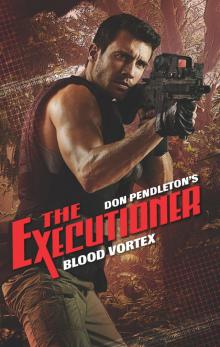 Blood Vortex
Blood Vortex Lethal Vengeance
Lethal Vengeance Killing Kings
Killing Kings Cold Fury
Cold Fury Righteous Fear
Righteous Fear Cyberthreat
Cyberthreat Stealth Assassin
Stealth Assassin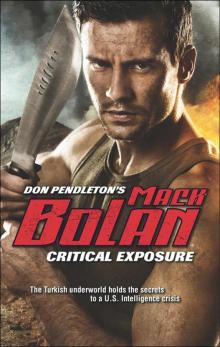 Critical Exposure
Critical Exposure Miami Massacre te-4
Miami Massacre te-4 Terrible Tuesday
Terrible Tuesday Dying Art
Dying Art Jungle Hunt
Jungle Hunt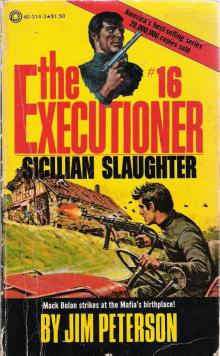 Sicilian Slaughter
Sicilian Slaughter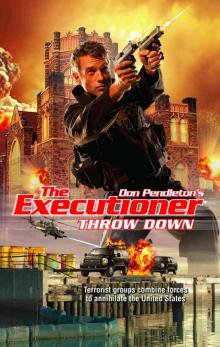 Throw Down
Throw Down Miami Massacre
Miami Massacre Sudden Death
Sudden Death Panic in Philly
Panic in Philly Savage Fire
Savage Fire Nightmare in New York te-7
Nightmare in New York te-7 Omega Cult
Omega Cult Sabotage
Sabotage Viral Siege
Viral Siege War Tactic
War Tactic Thunder Down Under
Thunder Down Under Haitian Hit
Haitian Hit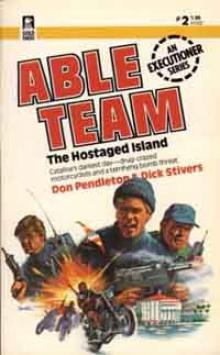 The Hostaged Island at-2
The Hostaged Island at-2 Fireburst
Fireburst The Killing Urge
The Killing Urge Assault
Assault Ashes To Ashes: Ashton Ford, Psychic Detective
Ashes To Ashes: Ashton Ford, Psychic Detective Flight 741
Flight 741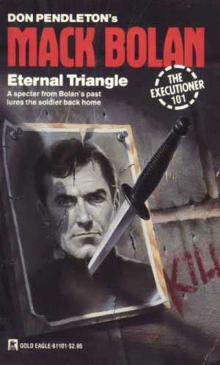 Eternal Triangle
Eternal Triangle Frontier Fury
Frontier Fury Meltdown te-97
Meltdown te-97 Chicago Wipeout
Chicago Wipeout Command Strike
Command Strike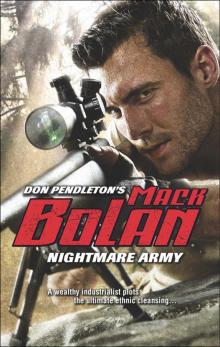 Nightmare Army
Nightmare Army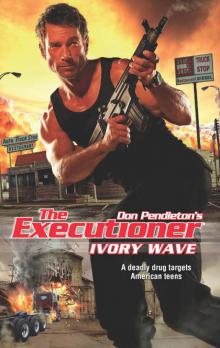 Ivory Wave
Ivory Wave Combat Machines
Combat Machines Silent Threat
Silent Threat Resurrection Day
Resurrection Day Perilous Cargo
Perilous Cargo Syrian Rescue
Syrian Rescue Arizona Ambush te-31
Arizona Ambush te-31 Siege
Siege Line of Honor
Line of Honor Lethal Risk
Lethal Risk Blood Testament te-100
Blood Testament te-100 Soviet Specter
Soviet Specter Arizona Ambush
Arizona Ambush Fatal Prescription
Fatal Prescription Deep Recon
Deep Recon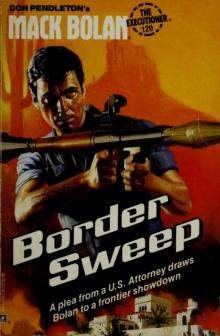 Border Sweep
Border Sweep Life to Life
Life to Life Ballistic
Ballistic Hellbinder
Hellbinder Time to Time: Ashton Ford, Psychic Detective (Ashton Ford Series Book 6)
Time to Time: Ashton Ford, Psychic Detective (Ashton Ford Series Book 6) The Violent Streets te-41
The Violent Streets te-41 The Libya Connection te-48
The Libya Connection te-48 Cartel Clash
Cartel Clash Whipsaw te-144
Whipsaw te-144 Blood Rites
Blood Rites Triangle of Terror
Triangle of Terror Betrayed
Betrayed San Diego Siege
San Diego Siege Death Minus Zero
Death Minus Zero Arctic Kill
Arctic Kill Mind to Mind: Ashton Ford, Psychic Detective
Mind to Mind: Ashton Ford, Psychic Detective Blood Heat Zero te-90
Blood Heat Zero te-90 Dead Man's Tale
Dead Man's Tale Sunscream te-85
Sunscream te-85 Ice Wolf
Ice Wolf Deadly Contact
Deadly Contact The Cartel Hit
The Cartel Hit Tower of Terror at-1
Tower of Terror at-1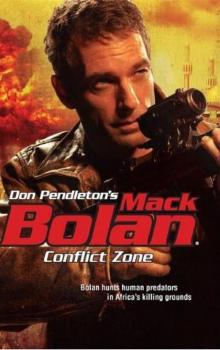 Conflict Zone
Conflict Zone Patriot Strike
Patriot Strike Point Blank
Point Blank Rogue Force
Rogue Force Patriot Play
Patriot Play Cold Judgment
Cold Judgment Contagion Option
Contagion Option Sicilian Slaughter te-16
Sicilian Slaughter te-16 Dragon Key
Dragon Key Terminal Velocity
Terminal Velocity Vegas Vendetta
Vegas Vendetta Ashes To Ashes
Ashes To Ashes Blood of the Lion
Blood of the Lion Ballistic Force
Ballistic Force Desperate Cargo
Desperate Cargo Detroit Deathwatch te-19
Detroit Deathwatch te-19 Nightmare in New York
Nightmare in New York Killpath
Killpath Executioner 056 - Island Deathtrap
Executioner 056 - Island Deathtrap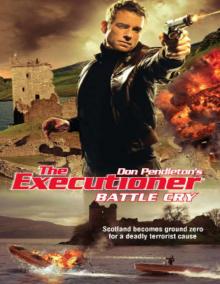 Battle Cry
Battle Cry Don Pendleton - Civil War II
Don Pendleton - Civil War II Copp In The Dark, A Joe Copp Thriller (Joe Copp Private Eye Series)
Copp In The Dark, A Joe Copp Thriller (Joe Copp Private Eye Series) China Crisis (Stony Man)
China Crisis (Stony Man) Code of Dishonor
Code of Dishonor Firebase Seattle
Firebase Seattle Hard Targets
Hard Targets Domination Bid
Domination Bid Kill Squad
Kill Squad Slayground
Slayground Poison Justice
Poison Justice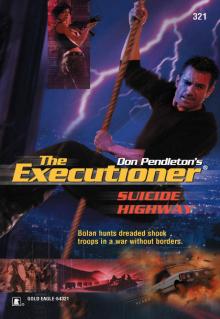 Suicide Highway
Suicide Highway Copp In Deep, A Joe Copp Thriller (Joe Copp Private Eye Series)
Copp In Deep, A Joe Copp Thriller (Joe Copp Private Eye Series) Prairie Fire
Prairie Fire Ninja Assault
Ninja Assault Death Metal
Death Metal Blood Run
Blood Run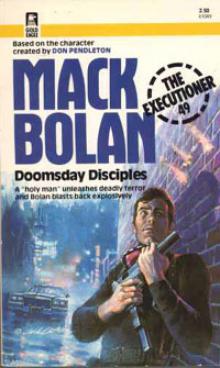 Doomsday Disciples te-49
Doomsday Disciples te-49 Breakout
Breakout Caribbean Kill te-10
Caribbean Kill te-10 Fire Eaters
Fire Eaters Hawaiian Hellground
Hawaiian Hellground Baltimore Trackdown te-88
Baltimore Trackdown te-88 Threat Factor
Threat Factor Don Pendleton's Science Fiction Collection, 3 Books Box Set, (The Guns of Terra 10; The Godmakers; The Olympians)
Don Pendleton's Science Fiction Collection, 3 Books Box Set, (The Guns of Terra 10; The Godmakers; The Olympians) Satan’s Sabbath
Satan’s Sabbath Assault on Soho te-6
Assault on Soho te-6 Copp In Shock, A Joe Copp Thriller (Joe Copp Private Eye Series)
Copp In Shock, A Joe Copp Thriller (Joe Copp Private Eye Series) California Hit te-11
California Hit te-11 Chicago Wipe-Out te-8
Chicago Wipe-Out te-8 Copp For Hire, A Joe Copp Thriller (Joe Copp Private Eye Series)
Copp For Hire, A Joe Copp Thriller (Joe Copp Private Eye Series) Point Position
Point Position Friday’s Feast
Friday’s Feast Exit Code
Exit Code Night's Reckoning
Night's Reckoning New Orleans Knockout
New Orleans Knockout Washington I.O.U.
Washington I.O.U. California Hit
California Hit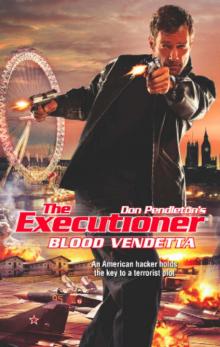 Blood Vendetta
Blood Vendetta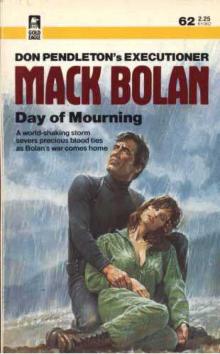 Day of Mourning te-62
Day of Mourning te-62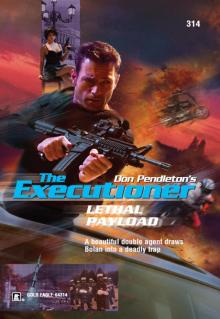 Lethal Payload
Lethal Payload Boston Blitz
Boston Blitz Knockdown
Knockdown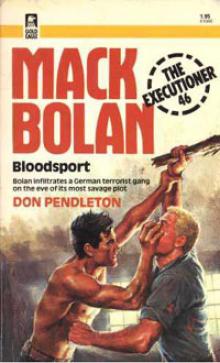 Blood Sport te-46
Blood Sport te-46 Council of Kings te-79
Council of Kings te-79 Terrorist Dispatch (Executioner)
Terrorist Dispatch (Executioner) Silent Running
Silent Running Death Squad
Death Squad Deadly Salvage
Deadly Salvage Oceans of Fire
Oceans of Fire Teheran Wipeout
Teheran Wipeout Border Offensive
Border Offensive Devil's Horn
Devil's Horn Death Run
Death Run Continental Contract
Continental Contract Savage Deadlock
Savage Deadlock Eye to Eye: Ashton Ford, Psychic Detective
Eye to Eye: Ashton Ford, Psychic Detective Revolution Device
Revolution Device Heart to Heart: Ashton Ford, Psychic Detective
Heart to Heart: Ashton Ford, Psychic Detective Apocalypse Ark
Apocalypse Ark Texas Storm
Texas Storm Maximum Chaos
Maximum Chaos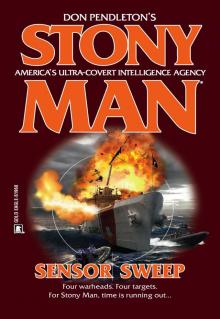 Sensor Sweep
Sensor Sweep Colorado Kill-Zone
Colorado Kill-Zone San Diego Siege te-14
San Diego Siege te-14 Tennessee Smash
Tennessee Smash Desert Impact
Desert Impact Fire in the Sky
Fire in the Sky Wednesday’s Wrath
Wednesday’s Wrath Super Bolan - 001 - Stony Man Doctrine
Super Bolan - 001 - Stony Man Doctrine Chain Reaction
Chain Reaction Pacific Creed
Pacific Creed Death List
Death List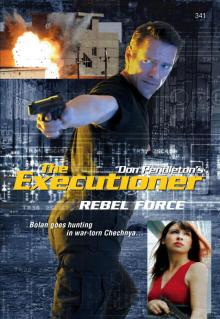 Rebel Force
Rebel Force Savannah Swingsaw te-74
Savannah Swingsaw te-74 Heart to Heart
Heart to Heart Shadow Search
Shadow Search Thermal Thursday
Thermal Thursday Battle Mask te-3
Battle Mask te-3 Rogue Assault
Rogue Assault Blind Justice
Blind Justice Cold Fusion
Cold Fusion Nigeria Meltdown
Nigeria Meltdown Backlash
Backlash Moscow Massacre
Moscow Massacre St. Louis Showdown
St. Louis Showdown Anvil of Hell
Anvil of Hell Life to Life: Ashton Ford, Psychic Detective
Life to Life: Ashton Ford, Psychic Detective Amazon Impunity
Amazon Impunity Run to Ground te-106
Run to Ground te-106 Save the Children te-94
Save the Children te-94 Detroit Deathwatch
Detroit Deathwatch Shadow Hunt
Shadow Hunt Terror Ballot
Terror Ballot Stand Down
Stand Down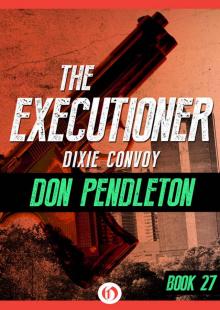 Dixie Convoy
Dixie Convoy Vendetta in Venice
Vendetta in Venice War Against the Mafia
War Against the Mafia Assassin's Tripwire
Assassin's Tripwire Appointment in Kabul te-73
Appointment in Kabul te-73 The Chameleon Factor
The Chameleon Factor Pirate Offensive
Pirate Offensive Prison Code
Prison Code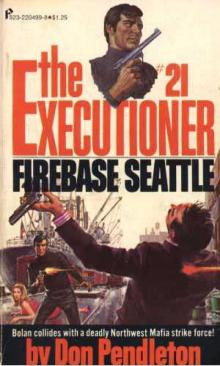 Firebase Seattle te-21
Firebase Seattle te-21 Ground Zero
Ground Zero Assassin's Code
Assassin's Code Perilous Skies (Stony Man)
Perilous Skies (Stony Man) Toxic Terrain
Toxic Terrain Canadian Crisis
Canadian Crisis Executioner 057 - Flesh Wounds
Executioner 057 - Flesh Wounds Uncut Terror
Uncut Terror War Everlasting (Superbolan)
War Everlasting (Superbolan)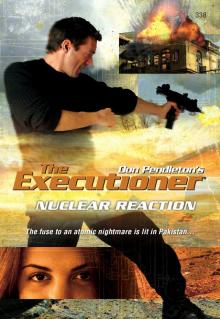 Nuclear Reaction
Nuclear Reaction Capital Offensive (Stony Man)
Capital Offensive (Stony Man) Beirut Payback te-67
Beirut Payback te-67 Monday’s Mob
Monday’s Mob Blood Dues te-71
Blood Dues te-71 Dead Easy
Dead Easy Texas Showdown at-3
Texas Showdown at-3 Sold for Slaughter
Sold for Slaughter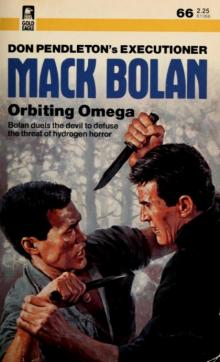 Orbiting Omega
Orbiting Omega Copp On Ice, A Joe Copp Thriller (Joe Copp Private Eye Series)
Copp On Ice, A Joe Copp Thriller (Joe Copp Private Eye Series)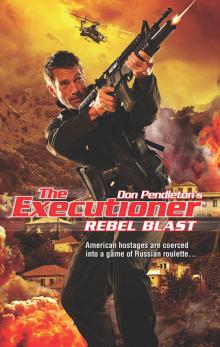 Rebel Blast
Rebel Blast Blowout
Blowout Killing Trade
Killing Trade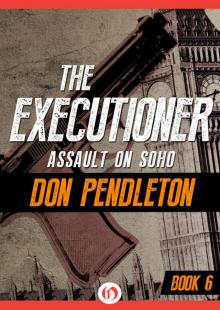 Assault on Soho
Assault on Soho Season of Slaughter
Season of Slaughter Collision Course
Collision Course Shock Waves
Shock Waves Continental Contract te-5
Continental Contract te-5 Dead Reckoning
Dead Reckoning Enemies Within
Enemies Within Agent of Peril
Agent of Peril Death Has a Name
Death Has a Name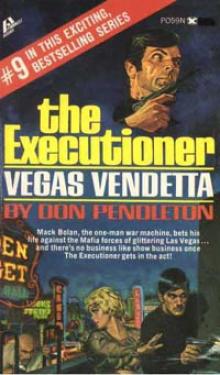 Vegas Vendetta te-9
Vegas Vendetta te-9 The Fiery Cross
The Fiery Cross Cleveland Pipeline
Cleveland Pipeline Armed Response
Armed Response Mercy Mission
Mercy Mission Tiger War te-61
Tiger War te-61 Renegade Agent te-47
Renegade Agent te-47 Damage Radius
Damage Radius Eye to Eye
Eye to Eye Acapulco Rampage
Acapulco Rampage Skysweeper
Skysweeper The Iranian Hit te-42
The Iranian Hit te-42 Death Gamble
Death Gamble Rebel Trade
Rebel Trade Predator Paradise
Predator Paradise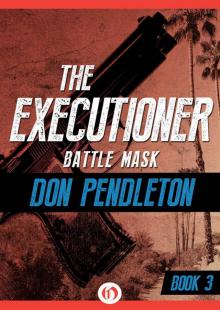 Battle Mask
Battle Mask Pulse Point
Pulse Point Missouri Deathwatch
Missouri Deathwatch Blood Tide
Blood Tide Missile Intercept
Missile Intercept Jersey Guns
Jersey Guns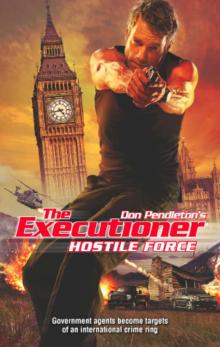 Hostile Force
Hostile Force The Bone Yard te-75
The Bone Yard te-75 Twisted Path te-121
Twisted Path te-121 Mind to Mind
Mind to Mind Copp On Fire, A Joe Copp Thriller (Joe Copp, Private Eye Series)
Copp On Fire, A Joe Copp Thriller (Joe Copp, Private Eye Series)